This article was reviewed by Steve Snedeker, professional landscaper.
Would you like to know if Roundup kills shrubs and trees? Well, we have researched this topic and have answers for you. It's vital to understand if Roundup kills shrubs and trees to avoid harming them.
Roundup can kill shrubs and trees if sprayed on their foliage or bark. Mature trees can tolerate small amounts of Roundup, while young trees and shrubs are more susceptible.
In this article, we will learn if Roundup kills shrubs and trees. We will also learn the answers to other interesting questions, such as will Roundup kill my lawn, and how do I kill weeds without harming my lawn? Keep reading to learn more.
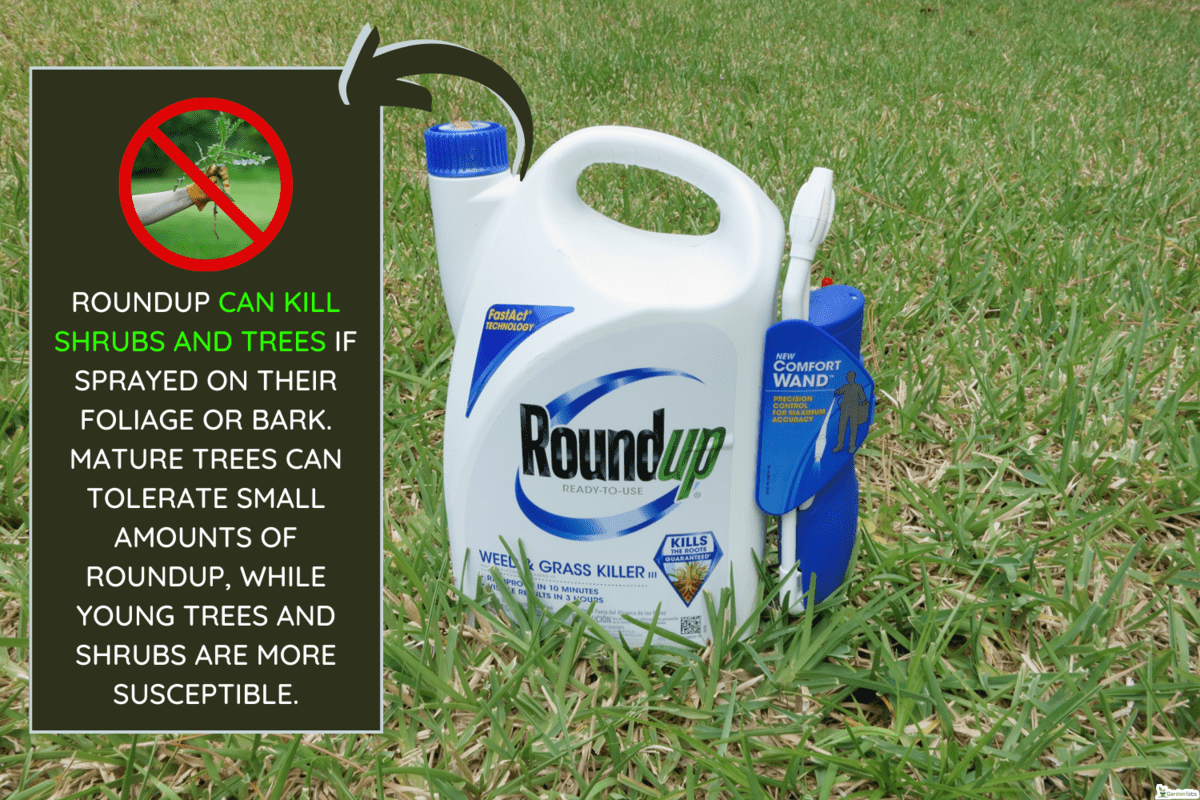
Does Roundup Kill Shrubs And Trees?
Roundup kills shrubs and trees when sprayed on their leaves or bark. If only a few leaves are sprayed, those leaves will die, but if the trunk is sprayed sufficiently, the whole plant may die.
Older trees will be more resilient to Roundup than younger trees. You can spray weeds near a large tree without harming it, but you shouldn't spray within six feet of trees shorter than four feet.
Shrubs are smaller than trees and so more susceptible to Roundup. It would be best to avoid spraying Roundup within six feet of any shrubs.
If you spray Roundup when it's windy, the mist can poison nearby shrubs or trees. Always spray Roundup close to the ground to reduce mist and avoid spraying on windy days.
It would also be best not to over-spray Roundup, which can cause it to run off into the groundwater and poison nearby shrubs and trees. Never spray more than a light misting on weeds to avoid runoff harming untargeted plants.
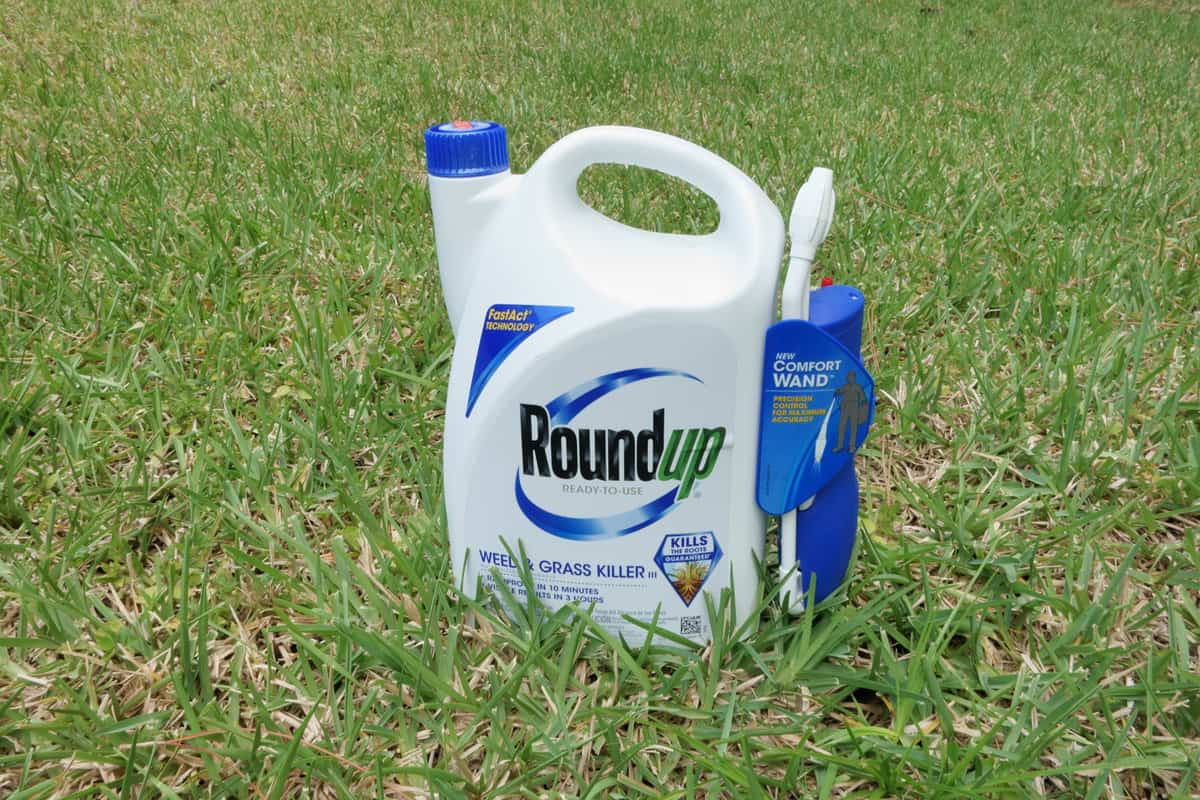
Will Roundup Kill My Lawn?
It would be best if you didn't use Roundup to kill weeds on your lawn. Roundup's active ingredient is glyphosate which blocks a plant's ability to grow and indiscriminately kills all vegetation.
Even if you spot spray only the weeds, Roundup can be reabsorbed by your lawn and damage it. Areas of lawn contaminated with Roundup will be stunted and more yellow.
There is a kind of Roundup that won't kill your lawn. Roundup For Lawns is a different product from Roundup that doesn't contain glyphosate. Instead, it uses chemicals that stop various types of broadleaf and crabgrasses and won't harm your lawn.
If you want to try Roundup For Lawns, here are two of the best products on Amazon.
Roundup for Lawns Ready-to-Use
You can find this product here on Amazon.
Roundup For Lawns Concentrate
You can find this product here on Amazon.
How Do I Kill Weeds Without Harming My Lawn?
There are a few ways to kill weeds without harming your lawn. Let's look at the most effective methods and learn how they work.
Boiling Water
One way to kill weeds without harming your lawn is boiling water. You must execute this method properly to avoid excess damage to your lawn.
Start by bringing a kettle of water to a boil. It's helpful to use a kettle so you can pour water accurately.
Now pour a thin stream of boiling water directly in the center of any weeds you want to kill. The boiling water will do minimal damage to your lawn, provided you are accurate and only pour a small stream for a few seconds.
If, after a day, you don't see a significant change in the weeds, then repeating this method will improve results.
Manual Pulling
One of the best ways to remove weeds from your lawn is to pull them out physically. You can use a tool like a trow or a screwdriver, but hands are very dexterous for weed removal.
When removing the weeds, try removing all the roots to prevent them from regrowing. If you're using a tool, insert it under the plant and work the roots up. When using your hands, grip the base of the weed and pull up while shaking side to side to loosen and remove the roots.
Selective Herbicide
A selective herbicide will target the growth of weeds and crabgrasses while allowing your lawn to grow unimpeded.
Add a selective herbicide to a sprayer and spray the areas where weeds are growing. It's best to focus your spray on weeds, but the selective herbicide will harm no grass.
If you want to try a selective herbicide to kill weeds without harming your grass, here are two of the best available on Amazon.
Ortho Weed Killer for Lawns
You can find this product here on Amazon.
Vinegar And Dish Soap
A natural way to kill weeds without harming your lawn is a mixture of vinegar and dish soap. The vinegar kills the weeds, while the dish soap allows more vinegar to be absorbed by the plant.
For this method to not harm your lawn, you will need to spray your weeds accurately. The solution won't toxify the area where you spray but will kill all foliage it comes into contact with.
Once you've sprayed the weeds, they will die, and your lawn can fill in the area. If any weeds survive, then respray to finish them off.
What Are The Best Methods To Control Weeds?
Knowing the best methods to control weeds is essential to prevent them from growing unchecked. Let's look at the best methods to handle weeds and learn how they work.
Apply Pre-emergent
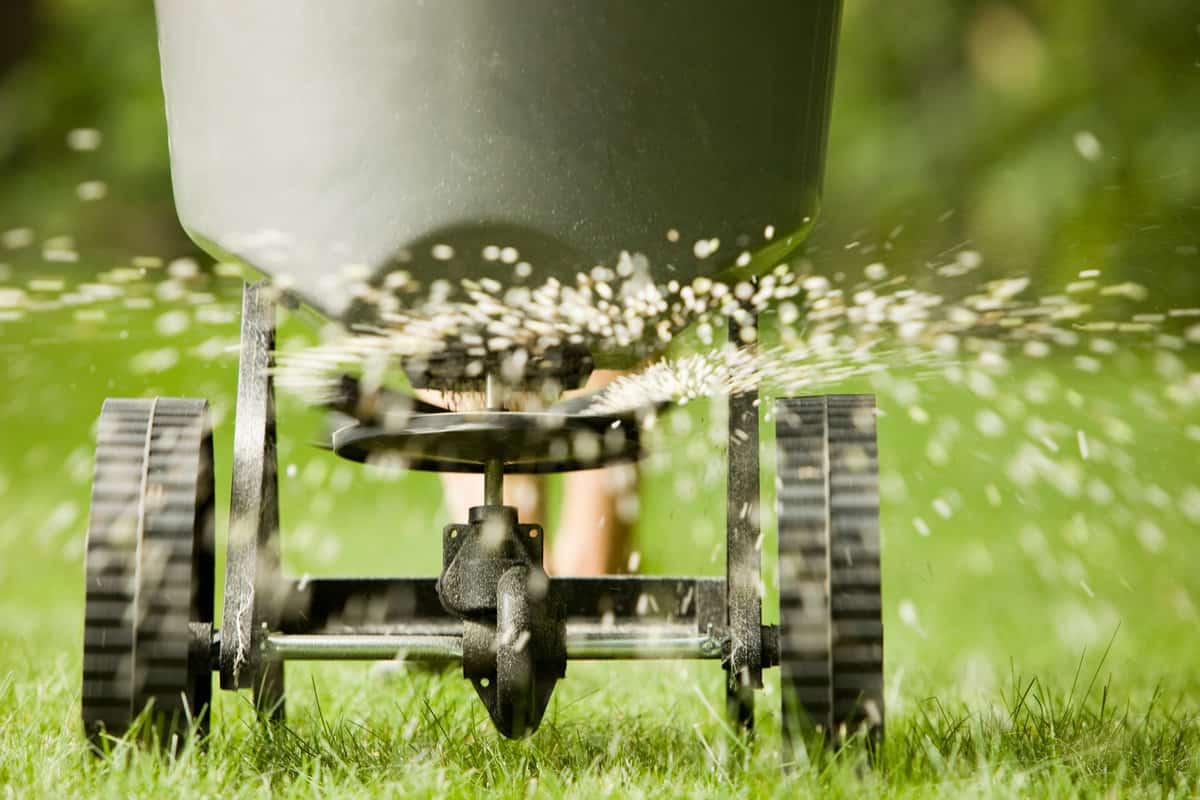
Pre-emergents work by preventing weed seeds from germinating. When applied, it prevents new weeds from sprouting, making managing them much easier.
To apply, add granular pre-emergent to a spreader and evenly distribute around areas that need weed controlling. Using pre-emergent every three months will help to control weeds.
Hand Pulling
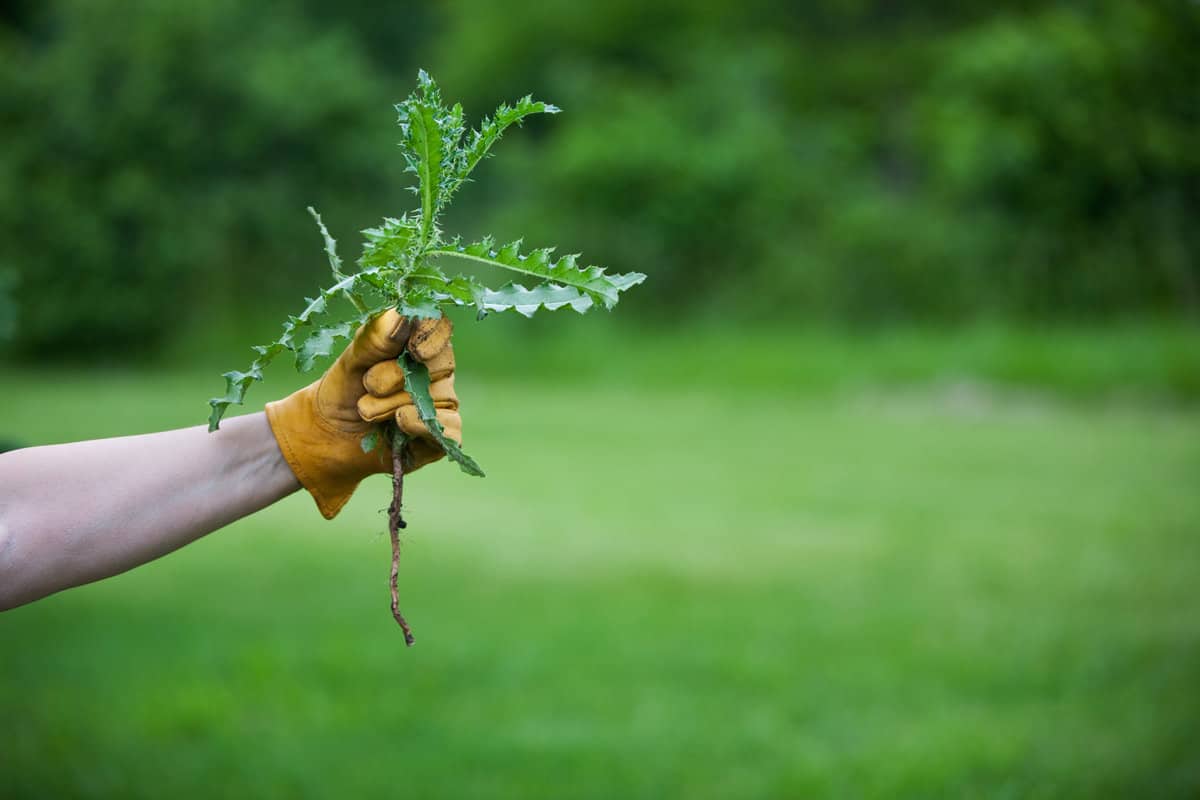
Hand-pulling weeds is one of the best methods to control weeds because it removes the roots and prevents many return weeds. This method works best when it's kept up often. By removing weeds as they appear, you can keep their numbers low.
Spot Spraying
https://www.canr.msu.edu/news/difference_between_roundup_and_roundup_for_lawns#:~:text=Roundup%3A%20The%20herbicide%20active%20ingredient,on%20which%20it%20is%20applied.
Spot spraying can kill weeds as soon as they appear. You can significantly reduce their spreading by killing weeds as they arise.
Fill a sprayer with herbicide, walk around your property and spray any sprouting weeds. Doing this often can keep weeds away by never allowing them to spread.
What Methods Are Ineffective Against Weeds?
While there are some great methods to control weeds, there are also some ineffective methods. Let's look at some of the least effective ways to control weeds and learn why they don't work.
Mulch
One of the most common ineffective methods to control weeds is mulch. For this method, you fill an area where you want to control weeds with a four- to six-inch deep layer of mulch. The thick blanket of mulch will choke out any weeds and prevent seeds from reaching the ground.
Part of why this method is so commonly sighted as a way to control weeds is that it partially works. The thick mulch does prevent many weeds by smothering them and denying them access to sunlight.
The problem is that mulch is only temporarily effective and never entirely stops weeds.
Part of why mulch fails is because of how determined weeds are to grow. Despite the conditions, weed seeds can roll deep into the mulch and find a damp location to germinate.
The roots can extend for several inches to find soil, and a stem will grow through the mulch to find sunlight using the seed's energy.
While the number of weeds will be reduced, they can still grow. Also, over time wind will blow small amounts of dirt onto the top of your mulch, providing the perfect places for weeds to sprout. If weeds can grow between cracks on the sidewalk, they can grow between mulch.
Landscape Fabric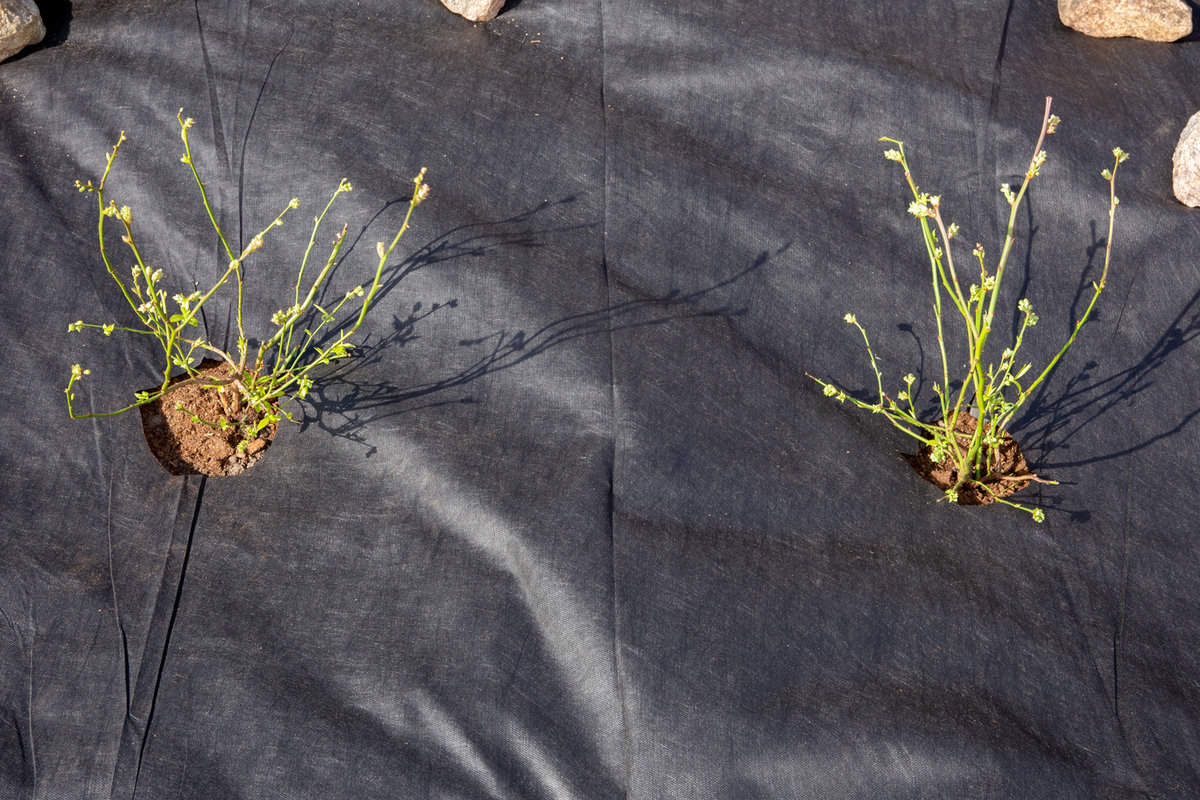
Another standard method to control weeds is landscape fabric. Often landscape fabric is placed under an area you want to fill with rocks to prevent weeds from growing. This method has the same pitfalls as the mulch.
When the wind blows, weed seeds and dirt are deposited on top of your landscape fabric. While the landscape fabric may reduce weeds for a few weeks, it won't significantly affect weed prevention.
Year Long Herbicides
Herbicides that last all year are also reasonably ineffective. The problem is that while a film of herbicide will be on top of the soil prevent weeds, the wind will bring a new layer of untainted dirt to germinate weeds.
Rain can also rinse away the herbicide making it less effective in wet climates. A year-lasting herbicide can reduce the number of weeds, but it can never replace regular spot spraying or weed pulling.
Final Thoughts
In this article, we learned that Roundup would kill shrubs and trees, but that mature trees are more resistant. We also learned that Roundup shouldn't be used to kill weeds in your lawn because it can damage the lawn for weeks.
Remember, the best way to control weeds is to stay on top of them.
We hope you enjoyed this article. If you want to learn more, check out some of these other posts.
How To Use A Roundup Sprayer [And Troubleshooting If Not Working]



